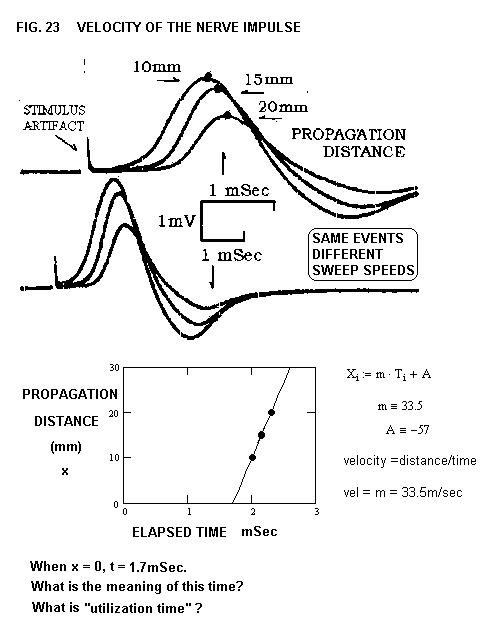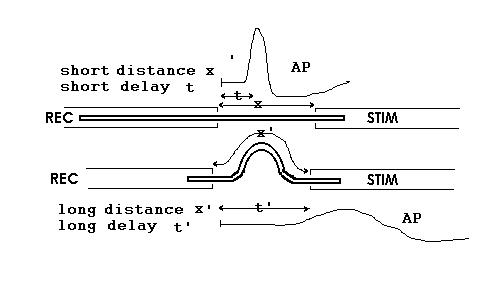

Next topic Previous topic Table of Contents
Next topic Previous topic Table of Contents
Though the action potential is an electrical event, it travels much more slowly than the electric currents. The stimulus artifact appears essentially instantaneously at the recording electrodes as well as at the stimulating electrodes, but the action potential appears after a delay, as the recordings show.
When the length of nerve between stimulating and recording electrodes is changed, the time between the artifact and the action potential is changed proportionately. The difference in distance over the difference in time is the velocity of the action potential.
The delay does not depend on the distance between the ends of the stimulating and the recording tubes but depends only on the length of nerve, however twisted or straight, between those two points. The delay between artifact and impulse includes the time required to get the impulse started and therefore cannot be used to get an accurate estimate of velocity. For that we need the time for propagation between two points, neither of which is at the stimulus site.
Record the AP successively at two different points along the nerve. The time of passage from one point to the other is the difference in latency of the two responses. The velocity can be found from the ratio of the distance between the points over the difference in latency. That principle is illustrated in the example.
Figure 23. Velocity of the nerve impulse spike.


Next topic Previous topic Table of Contents